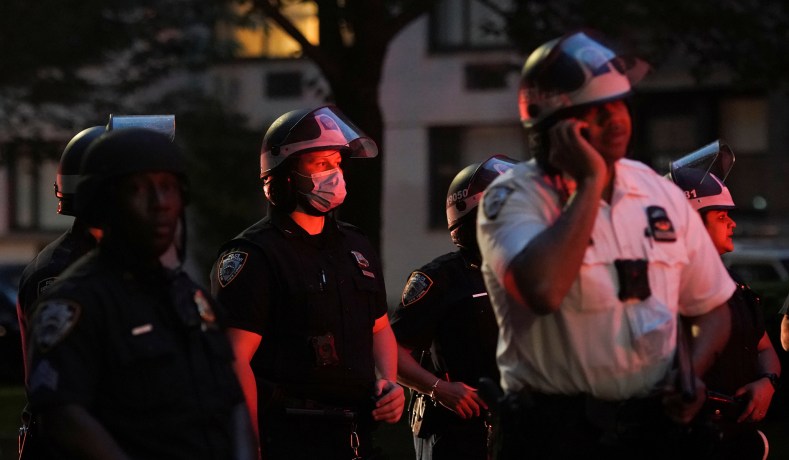
In a piece last week, I mentioned a forthcoming study by Tanaya Devi and Roland Fryer about what happens when cops stop doing their jobs, specifically in the wake of viral incidents such as the one in Ferguson, Mo., a few years back. That study is now available in its entirety.
Basically, it looks at what happens when federal or state authorities investigate police departments accused of having a “pattern or practice” of violating civilians’ rights. The good news is that these investigations usually lead to a measurable decrease in crime, including homicides.
The bad news is that, after five of the 27 investigations Devi and Fryer looked at closely, crime went up instead. And it turns out that those five investigations were the ones “preceded by ‘viral’ incidents of deadly force,” specifically “the deaths of Freddie Gray in Baltimore, MD, Laquan McDonald in Chicago, IL, Timothy Thomas in Cincinnati, OH, Tyisha Miller in Riverside, CA, and Michael Brown in Ferguson, MO.” The authors “estimate that these investigations caused almost 900 excess homicides and almost 34,000 excess felonies.” For comparison, American cops kill about 1,000 civilians — in total, throughout the country — each year.
Why does crime go up when viral killings set off investigations? The data from the cities where this occurred seem consistent with the “Ferguson effect” theory:
The leading hypothesis for why these investigations increase homicides and total crime is an abrupt change in the quantity of policing activity. In Chicago, the number of police-civilian interactions decreased by almost 90% in the month after the investigation was announced. In Riverside CA, interactions decreased 54%. In St. Louis, self-initiated police activities declined by 46%. Other theories we test such as changes in community trust or the aggressiveness of consent decrees associated with investigations — all contradict the data in important ways.
I think there are a few simple, important takeaways. First, anything we can do to reduce police abuses will remove the raw material these problems stem from. Second, while it would be insane to suggest people shouldn’t protest misconduct by law enforcement, I do think it’s wise for activists to choose their cases wisely — because some viral shootings, such as the one in Ferguson, have turned out to be perfectly legitimate uses of force. (For what it’s worth, my general impression is that activists already have become a lot more careful these past few years.) And third, cops should not be allowed or encouraged to stop doing their jobs in response to viral videos.
These data also draw attention to some important political dynamics. There is undeniably a shift in public opinion in favor of police reform, and as I wrote last week, I agree there are things we could do to improve law enforcement. But if we end up with less policing, rather than better policing, we’re just going to get more crime and eventually a shift back to tougher policies. Last time around things got so bad that New York City elected a Republican mayor, for God’s sake.
There’s a temptation in some quarters to think this issue is like gay marriage or marijuana legalization, where there’s a turning point in public opinion and a rapid shift in policy and then everyone wonders what the big deal ever was. See, for example, Tim Alberta’s piece in Politico today, which bizarrely claims we may be seeing the “last stand” of law-and-order Republicans and draws those two parallels explicitly. But crime isn’t like that. When the streets become unsafe, public opinion shifts back in favor of the folks who stand between the innocents and the bad guys.






